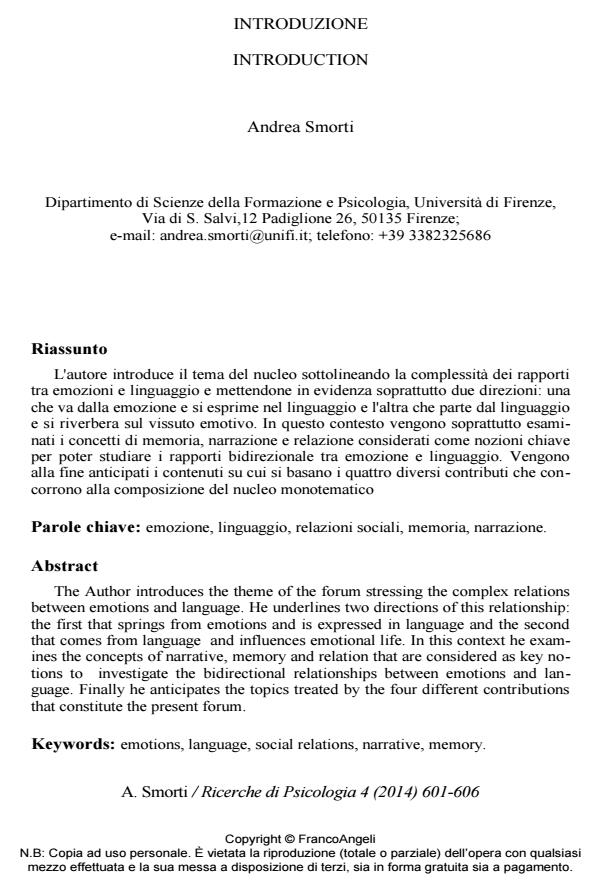"Emotions and language: from theoretical models to intervention tools". Introduction
Journal title RICERCHE DI PSICOLOGIA
Author/s Andrea Smorti
Publishing Year 2015 Issue 2014/4
Language Italian Pages 6 P. 601-606 File size 137 KB
DOI 10.3280/RIP2014-004004
DOI is like a bar code for intellectual property: to have more infomation
click here
Below, you can see the article first page
If you want to buy this article in PDF format, you can do it, following the instructions to buy download credits

FrancoAngeli is member of Publishers International Linking Association, Inc (PILA), a not-for-profit association which run the CrossRef service enabling links to and from online scholarly content.
The Author introduces the theme of the forum stressing the complex relations between emotions and language. He underlines two directions of this relationship: the first that springs from emotions and is expressed in language and the second that comes from language and influences emotional life. In this context he examines the concepts of narrative, memory and relation that are considered as key notions to investigate the bidirectional relationships between emotions and language. Finally he anticipates the topics treated by the four different contributions that constitute the present forum.
Keywords: Emotions, language, social relations, narrative, memory.
Andrea Smorti, Forum. "Emozioni e linguaggio: dai modelli teorici ai dispositivi di intervento". Introduzione in "RICERCHE DI PSICOLOGIA " 4/2014, pp 601-606, DOI: 10.3280/RIP2014-004004